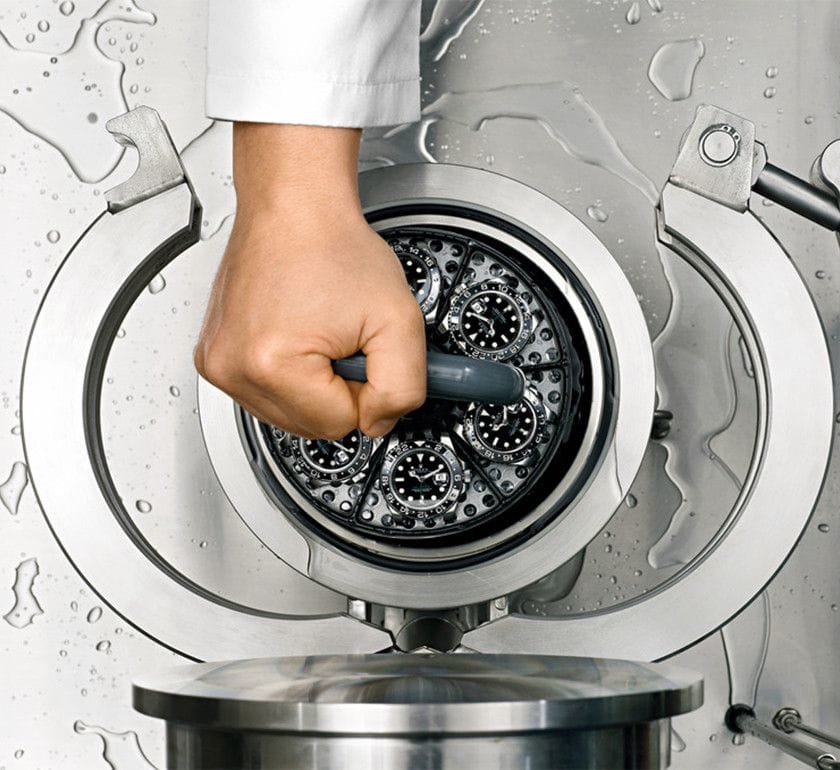
Rolex Water-Resistance: Complete Guide to Rolex and Water
Many people associate Rolex with reliability, robustness, accuracy, and perfection.
Today, most people also expect a Rolex watch to be water-resistant, and the fact is that all Rolex watches actually are water-resistant.
It is widely known that Rolex has been to some extreme and demanding places. Rolex watches have been brought to the lowest lows and the highest highs,
For a watch to be truly reliable in extreme conditions, it needs to be water-resistant. And while watches that offer hundreds of meters of water resistance, will, in most cases never be brought to these depths, the high water resistance is a testimony to the extreme outer factors, such as water, and the pressure of water, that a watch can handle.
With Rolex’s vision of perfection in mind, you can expect that Rolex has gone to great lengths to improve each and every aspect of its watches. One of those aspects that play an important role is the watches’ water resistance.
Rolex’s constant pursuit of perfection has meant that Rolex has consistently improved the water resistance of its watches. Both to make the water resistance more reliable and also to make them withstand greater water pressure resistance.
In this article, we’ll look closer at Rolex water resistance, how Rolex watches put its watches to the test to ensure water resistance, and how deep you can submerge different models.
The first water-resistant Rolex watch
The first water-resistant Rolex watch was the Rolex Oyster. This watch was introduced in 1926. Rolex has received the respect of developing the world’s first water-resistant watch, but an interesting anecdote of this is that there’s actually more to it than the fact that Hans Wilsdorf invented the first water-resistant wristwatch.
At the time, the watch was promoted as ”water-proof”, and we’ll go more into detail about water-resistance vs water-proof further on.
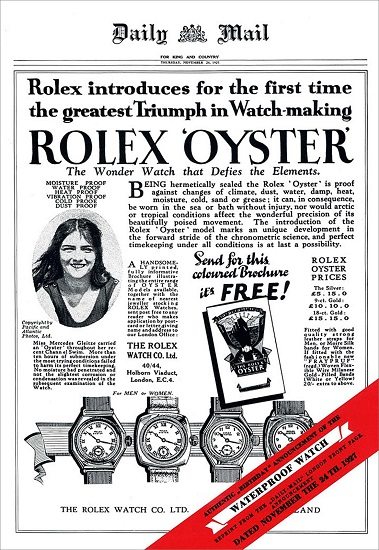
Hans Wilsdorf, the founder of Rolex, did not actually invent the Oyster concept in its full. Instead, his Rolex Oyster was based on a patent initially filed by Paul Perregaux and Georges Peret in 1925. Wilsdorf purchased all rights to the patent from them When he saw their design, and then used elements of their screw-down crown design in his own Oyster case. The following year, he came to register his own Oyster Case innovation. In other words, while Rolex is usually credited for making the world’s first water-resistant case for a wristwatch, the whole truth is actually that the original idea and design for a water-resistant case belongs to Perregaux and Peret.
The name Oyster is of course very appropriate for the first water-resistant Oyster watch, both because of the oyster’s close relationship with the ocean and water, but also because of its ability to keep extremely tight.
Water-resistant vs water-proof
As you saw in the advertisement for the Rolex Oyster, it was advertised as water-proof. Today, however, watch brands promote their watches as water-resistant.
Why, you may ask?
Well, the reason why watches are no longer advertised as water-proof is simply because of the fact that nothing is water-proof. Eventually, everything will leak water, and, in the case of watches, if a watch hasn’t been serviced in a long time, for example, the waterproofness cannot be guaranteed, and therefore it is not accurate to advertise as a watch as water-proof when it isn’t, or can’t guarantee that it will be at all times.
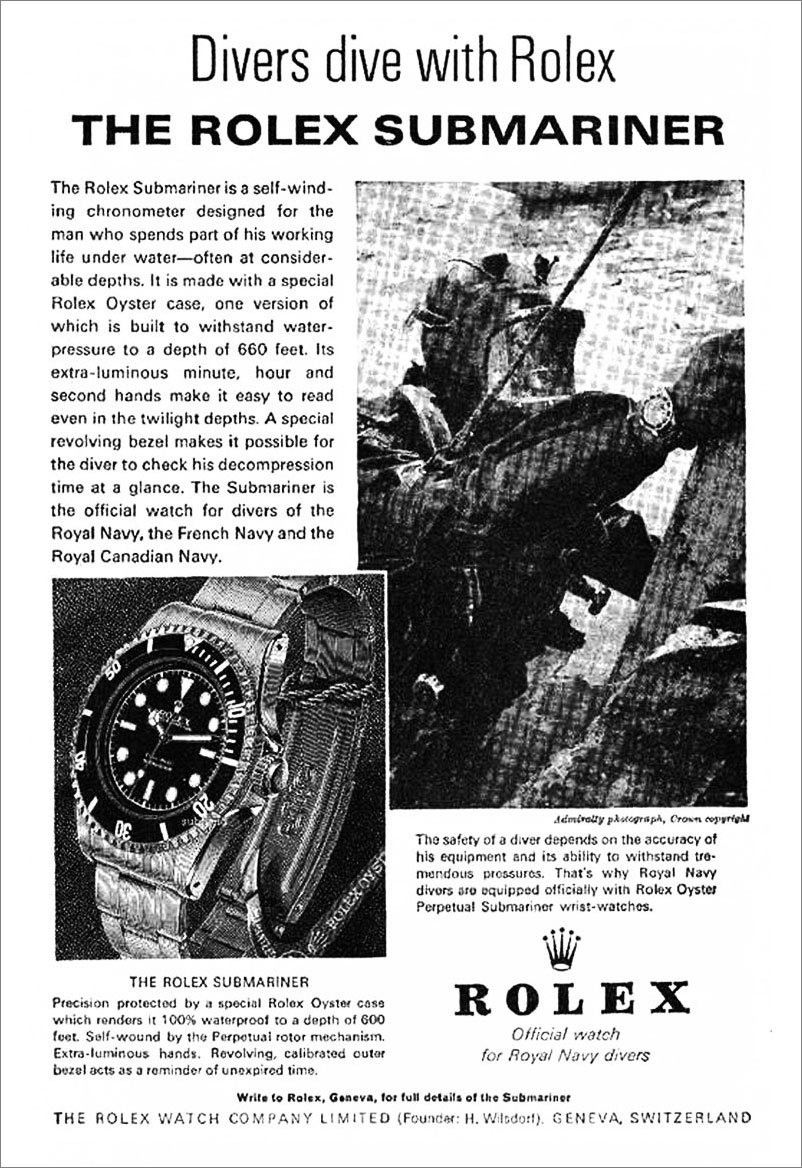
In fact, there have been many cases in the US brought before the FTC (Federal Trade Commission) due to watches being advertised as “waterproof” (and then failing). As a result of this, they simply asked watch companies (and companies were clever enough themselves) to stop using the term. So around 1968, you do not see a lot of watches with the term ”Waterproof” on them. Instead, they state that they are “water-resistant”.
Now, let’s zoom in on Rolex water resistance in modern times, how Rolex can create water-resistant timepieces, and what type of water-resistance different watches in their range have.
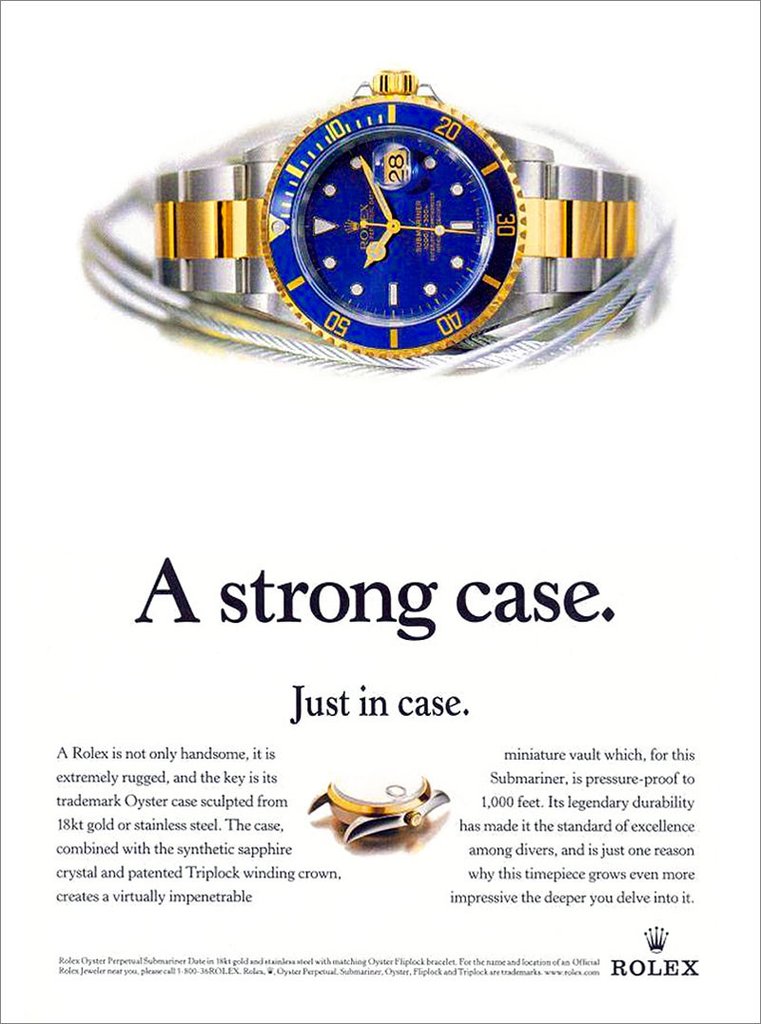
Let’s look at what Rolex says about its watches: ”Tested test • ed Subjecting our watches to extremes they are never likely to encounter. A series of exacting trials designed to ensure our watches excel in any real-world conditions. The way to ensure a Rolex wearer can go faster, further, and deeper. The way we constantly invent, improve and innovate. The Rolex Way.”
This quote shows the mindset of Rolex, and what they do in order to develop watches with robust and reliable characteristics.
First of all, when it comes to water resistance, Rolex develops its watches so that they can endure conditions that most people are likely to ever encounter. For example, the Rolex Submariner is a dive watch, originally developed for professional divers. Today, the Submariner offers 300-meter water resistance, but the fact is that the vast majority of Submariner watches will never come near that kind of depth. In fact, most Submariner owners won’t even wear their watch when they go swimming.
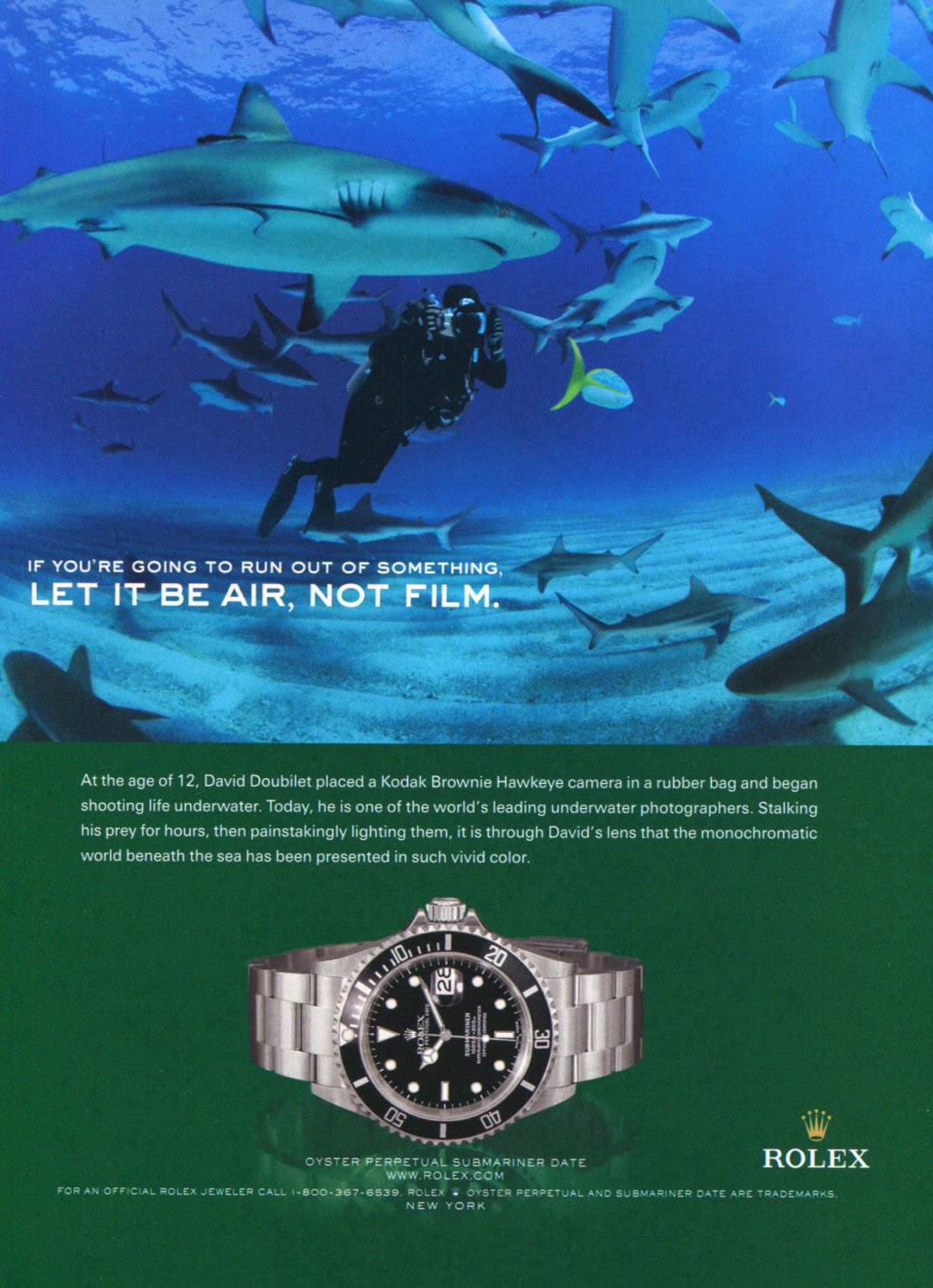
So part of developing watches that have above and beyond abilities is ”for the show”, to show people what the brand really is capable of developing. But most importantly, they exist because that is what people expect when buying a high-end luxury tool watch, whose purpose, at least originally, and at its core, is to be used out in the field, and in real harsh diving environments.
Then, of course, we come to the most important part of water resistance when it comes to watches, and that is that it comes in very handy. While you won’t go diving at 300-meters, it feels good to know that a Rolex watch can handle water, so that it won’t get destroyed as soon as you get in contact with water.
But when it comes to water resistance, not all Rolex watches are created equal. At the same time, today, Rolex is able to claim that all of their watches are waterproof, up to a certain amount of water pressure.
Something to have in mind though is that the terms waterproof and water-resistant are used interchangeably by a lot of people.

What makes a Rolex water-resistant?
Now, I’ve touched on this topic briefly when discussing the first water-resistant Rolex watch, and believe it or not, the idea and concept for making today’s Rolex watches water-resistant, are based on the same concept. This is why the vast majority of Rolex watches feature ”Oyster Perpetual” in their name.
On the dial of most Rolex watches, you will find the words ”Oyster Perpetual”. These are small, but two very important words.
The word Oyster indicates that the watch has a so-called Oyster case, and is thus water-resistant. This guarantees a water resistance of up to 100 meters.
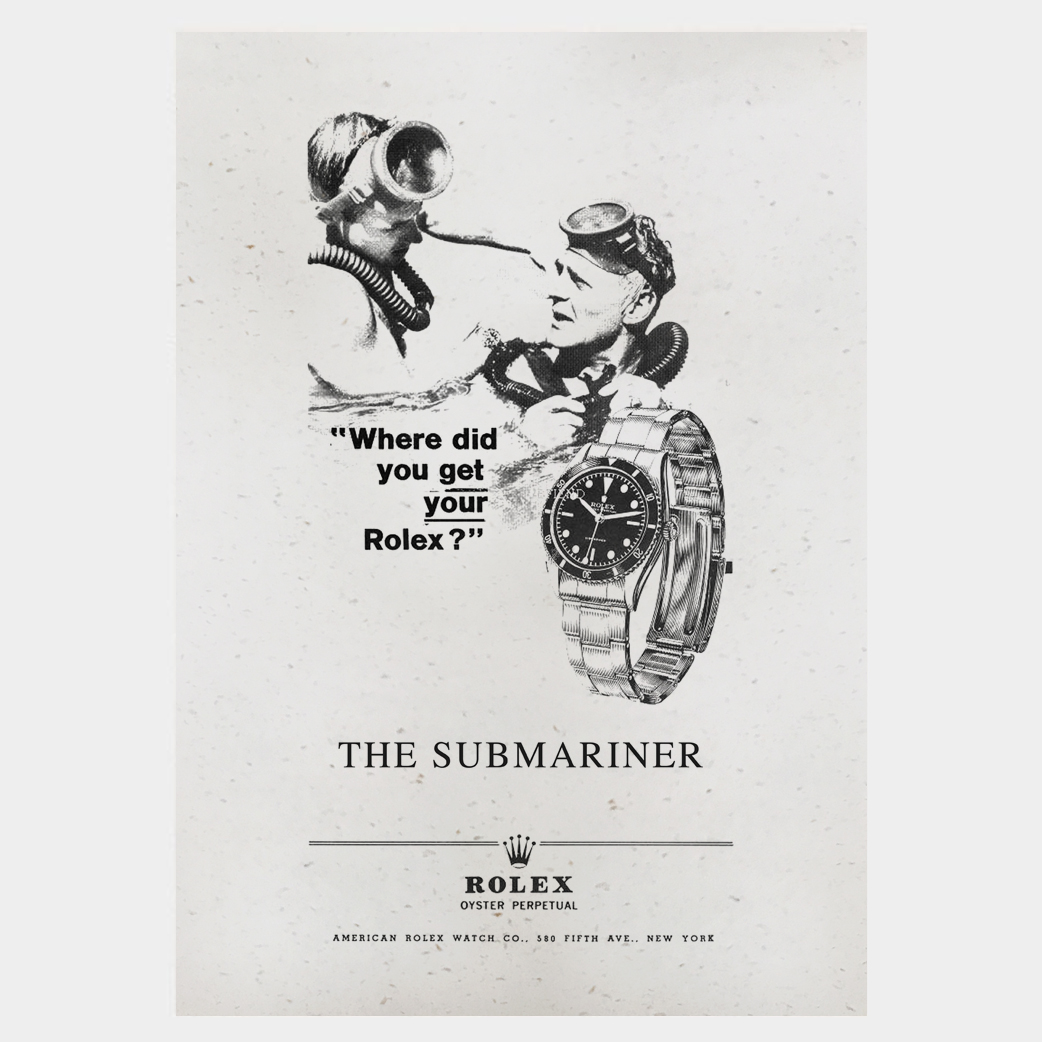
The ”Perpetual” simply indicates that the Rolex watch is automatic, and features a rotor.
The Oyster case utilizes a system of screwing down the bezel, case back, and winding crown against the middle case which forms a completely closed and impenetrable case, resembling that of an Oyster shell. This case structure keeps the movement safe both from water and dust.
Rolex Waterproofness testing
In order to guarantee complete reliability and in this case the guarantee of being fully water-resistant, Rolex goes above and beyond with its tests.
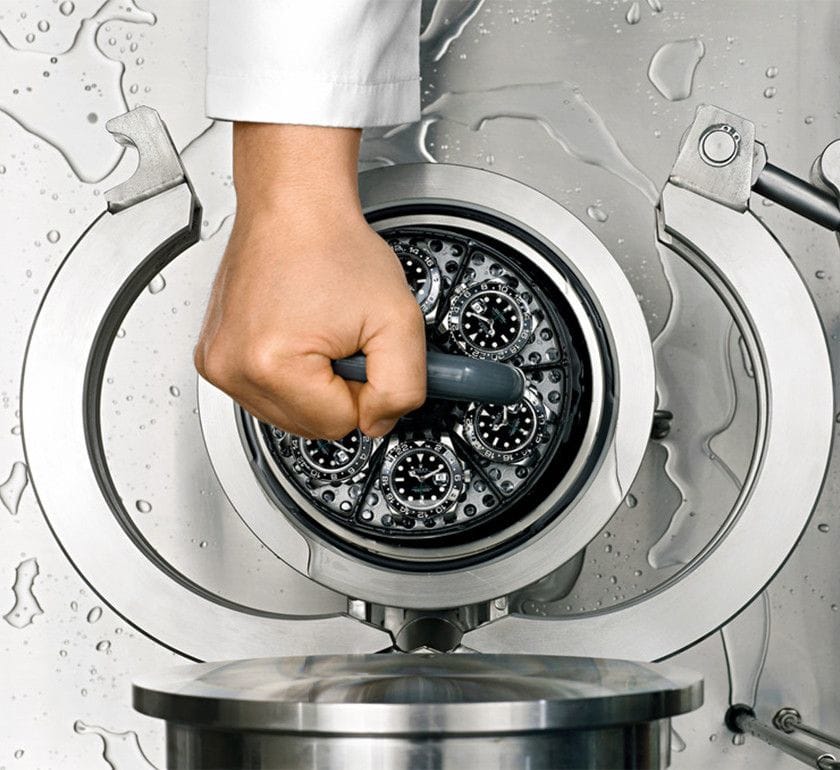
Before being dispatched from the factory, every Rolex Oyster watch is immersed in water and subjected to a pressure 10 percent greater than that found at the depth to which it is guaranteed. For a standard Rolex Oyster watch featuring a 100-meter water-resistant, this means pressure testing it to 110 meters. To ensure the reliability of water resistance when it comes to Rolex’s professional dive watches, Rolex pressure tests them 25 percent more than they are labeled to be able to withstand.
Extreme Rolex water-resistance
The Rolex Deepsea Sea-Dweller is Rolex’s most serious dive watch. This watch offers a water resistance of 3,900 meters (12,800 feet), which goes to show Rolex’s consistent devotion to perfection and going above and beyond. Because the fact of the matter is that no Deepsea Sea-Dweller will ever use their watch at that kind of depth.
But at the same time, it is also to show just what they are capable of.
Each and every single Rolex Deepsea Sea-Dweller is tested in a specially designed high-performance tank. This stainless steel hyperbaric tank is cast in a single piece and weighs 1.3 tonnes. The tank is built to simulate the pressure at 4,875 meters (16,000 feet) below sea level.
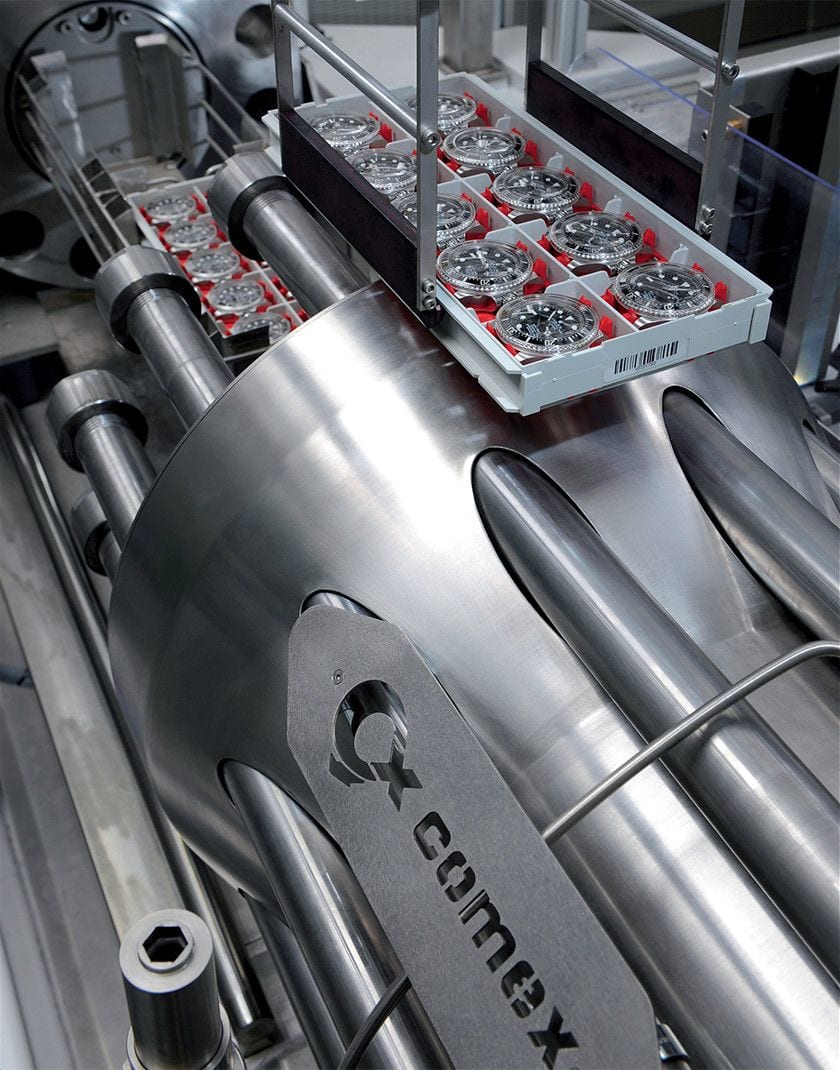
The force exerted upon the watch at this depth is equivalent to a weight of 4.5 tonnes. And if the watch is not up to par, it means that at this type of pressure, the watch will implode.
As a result, it means that if you own a Rolex Deepsea, it means that the watch has survived this truly impressive test.
A part of Rolex’s marketing strategy has been to show people just how reliable and robust their timepieces are, by putting them to the test in the field, and having them used as real tools by true professionals.
When it comes to Rolex water resistance, the single most important event for Rolex was on 26 March 2012, when the DSV Deepsea Challenger carried a Rolex Oyster Perpetual Date Sea-Dweller Deepsea Challenge prototype diving watch to a depth of 10,898.4 meters (35,756 ft). The Rolex watch which was attached to the outside of the submarine resisted the water pressure and continued to perform with Rolex’s distinct precision once back above water. This is the deepest ocean depth anyone has explored, and the impressive fact that a Rolex was used during this expedition at such an extreme depth is something to truly brag about.
Now, of course, none of the regular Rolexes will ever be able to withstand such pressure, however, just the mere knowledge and event just goes to show that Rolex means business. In everything they do.
Is your Rolex watch water-resistant?
Whether your Rolex watch is water-resistant or not depends on a lot of factors.
The first thing you want to consider is age.
Ideally, you should have your watch pressure tested every year in order to ensure full water resistance. This is especially if you plan on going swimming or diving with it.
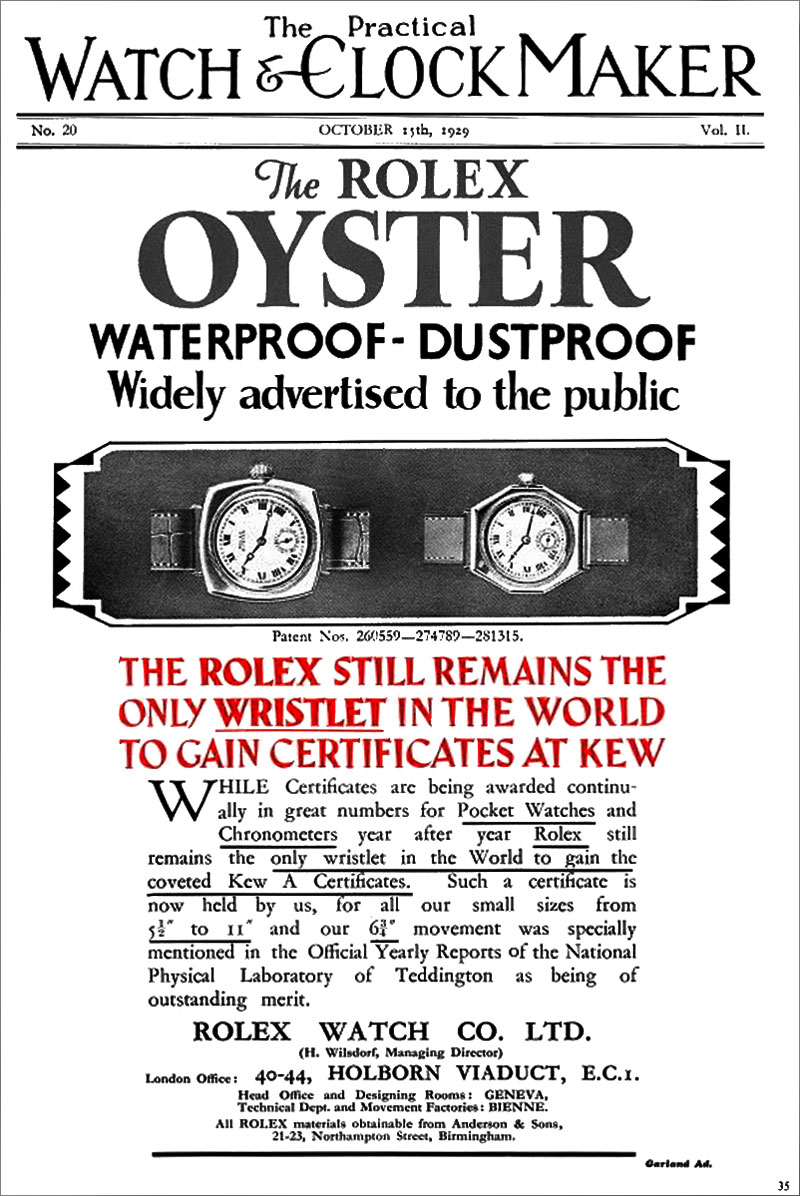
As such, if you have an old Rolex watch, in particular vintage, and you have not had it pressure tested the last year, you should always have the assumption that it is no longer water-resistant and may leak in water if you come in contact with water.
But Rolex watches are water-resistant, right? How does this make sense?
Well, the fact is that all Rolex watches have seals and a crown. Over time, the seals will dry out, and this means that they may no longer offer complete water resistance. Furthermore, the crown of your watch is a sensitive spot of your Rolex watch, as it is a spot where water has a, in theory, direct channel to the movement. And water is the greatest enemy of a watch’s movement.
The Gaskets form seals around the stem of the crown, pushers, and correctors and sit inside the case and the crystal. The gaskets lose elasticity and the ability to form a proper seal over time.
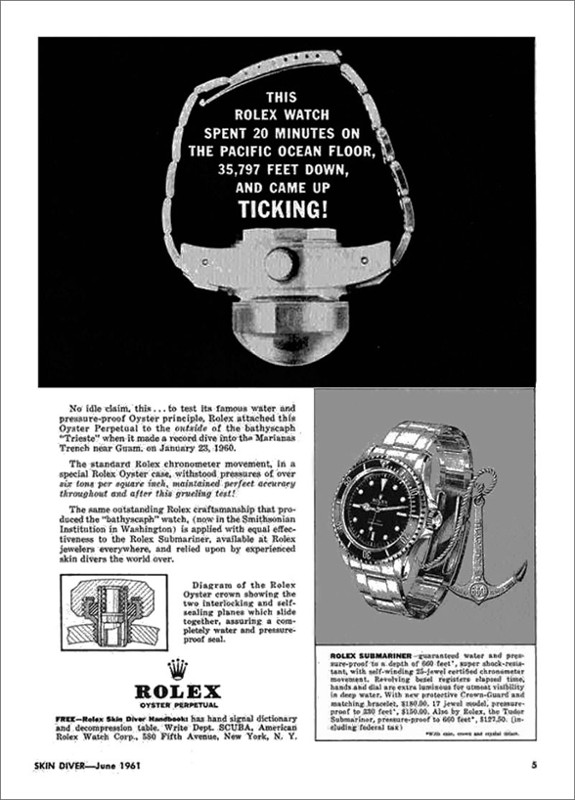
The bottom line is that over time, these deteriorate and become less effective in keeping moisture out, and this means that while your Rolex watch is on paper water-resistant, it may not be. To ensure complete water resistance, you, therefore, want to do yearly pressure tests of your watch, and if you want to take it one step further, regularly service your watch. On each service, the seals are replaced to new, fresh seals, which of course increases the reliability of the watch’s water resistance. There are many external factors that can make the gaskets and seals less effective over time, and thus risk compromising your Rolex’s water resistance, but more on that later.
The bottom line? if the seals and gaskets are old, even the most serious Rolex dive watch such as the Deepsea Sea-Dweller should be water-resistant to 3,900 meters, but may start leaking at just a few meters in the water.
Furthermore, if you have dropped your watch or put it under stress of some sort, this might also compromise your Rolex’s water resistance.
In other words, just because your watch is water-resistant to X meters, doesn’t necessarily and always mean that it is in practice.
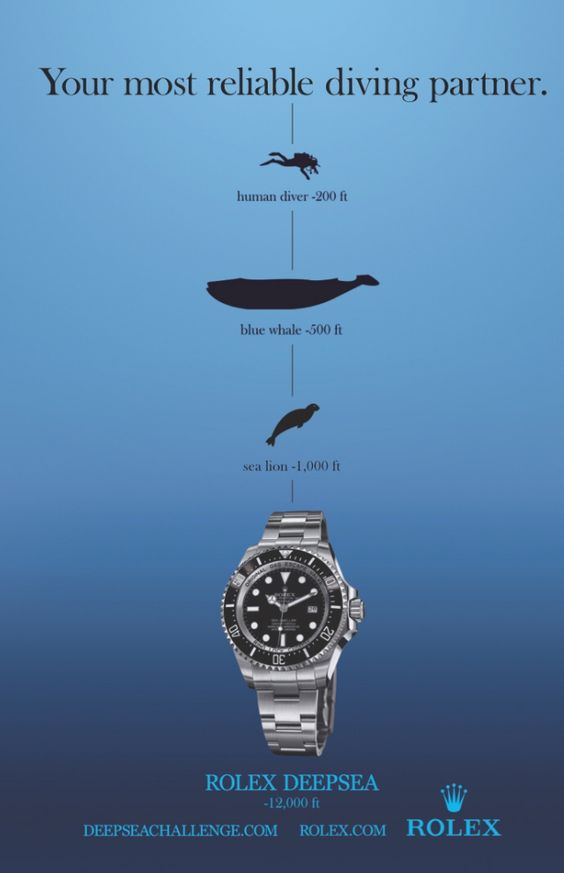
How to look after your Rolex watch to keep it water-resistant
Now, do by no means take our tips for keeping your Rolex water-resistant as any guarantees that it will be. Here, we will only bring up the things that can compromise the seals and gaskets of your watch, and thus harm its reliability.
First off, extreme temperatures are not good for any watch. Extreme temperatures and particularly extreme and fast temperature changes can accelerate the natural degradation of the seals, and over time, it can reduce and compromise the water resistance of your Rolex to the point where moisture or water can find its way inside the case.
You should, therefore, be particularly careful when using your watch in a sauna, hot tub, hot shower, or in similar places.
As mentioned, accidentally dropping your watch, can also compromise your watch’s water resistance.
Another critical point of your Rolex watch is the crown. Rolex watches feature either a trip-lock or a twin-lock crown, which means that it is secured in either two or three places. This means that, in theory, Rolex watches are water-resistant even when the screw-down crown is not screwed in thanks to the rubber gaskets and seals that work in conjunction with the Rolex crown to keep water out. But if those gaskets and seals haven’t been changed in a while or have been degraded by other factors, water could penetrate the case.
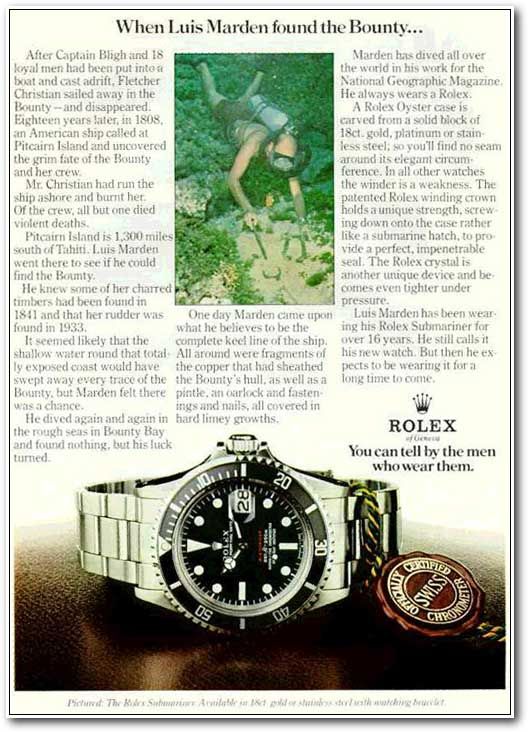
Therefore, not screwing down your watch’s crown when your watch is in contact with moisture or water can be extremely dangerous, as it greatly compromises the water resistance of the watch.
Therefore, always, always, always, make sure that the crown of your Rolex watch is safely and fully screwed down to the case. We have seen many people who have forgotten to screw down the crown of their Rolex, for example when washing their hands, and the result has in some cases been that water has found its way inside the case. The result is of course a costly full service of the watch to get out any water and moist quickly to prevent rust.
Aftermarket parts, modifications, accessories.
This is an area where you want to be really careful.
Rolex invests millions and millions into developing each and every single part of their Rolex watches so that they meet the absolute toughest standard. Not to mention when it comes to water resistance.
Therefore, when you replace factory components with non-Rolex “aftermarket” components, you risk diminishing the water resistance of your Rolex.
Common aftermarket parts that can be particularly dangerous are the sapphire crystal and the crown. The way these are installed on your watch is, of course, very important. If you want to be fully secure, you want to have the job done by either a very experienced and skilled watchmaker or an official Rolex service center.

Different Rolex watches offer different water-resistance
Let’s look a little at the water resistance that different Rolex models offer.
As you know, all Rolex Oyster watches offer a water resistance of at least 100 meters.
It is important to point out, however, that what this depth rating is actually saying is that a particular watch can handle pressure that is equivalent to X meters below the surface.
Do note that the Rolex models listed below refer to modern Rolex watches, and thus not vintage or older watches. Furthermore, you should also have the things already mentioned in mind, such that your watch may not be fully water-resistant even though it says so on the dial.
Do note that the water-resistance of the models below refer to the modern versions of these watches, and are Rolex’s water-resistance guarantees.
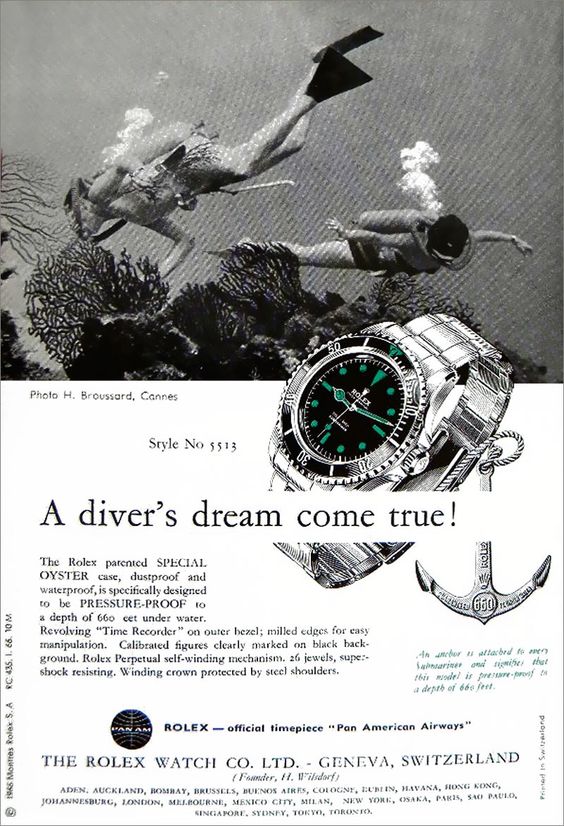
Rolex Cellini
The Rolex Cellini is Rolex’s least sporty timepiece as it is a dress watch, and naturally, it is the watch with the least water resistance.
The Rolex Cellini has a water resistance of 5atm, which is 50 meters. This means that you can submerge the watch underwater, but ideally, you should not come in contact with more than a few splashes of water. With watches that have this low water resistance, it is recommended that you keep the watch away from water. Especially considering that the Cellini comes on a leather strap. Minimize exposure to the water and by no means should you dive with your watch.
Rolex Datejust water resistance
All modern Rolex watches are “Oysters”. This means the Datejust 41, Datejust 36, and all Datejusts in between. As mentioned earlier, since they are “Oysters”, it means that they have a water resistance of 100 meters (330 feet). A watch with 100 meters of water resistance can be in the water for a while such as when swimming and bathing, but you should avoid going diving with it.
Rolex Submariner water resistance
The Rolex Submariner has a water resistance of 300 meters. Seeing that it is a dive watch, this watch is made for diving and can handle any diving trip that most “normal” people go to. This watch can be submerged underwater for longer times, so don’t worry.
Rolex Sea-Dweller water resistance
The Rolex Sea-Dweller is a serious dive watch that you won’t have to worry about getting wet. The Rolex Sea-Dweller has a water resistance of 4,000 feet (1,220 meters)
Rolex Deepsea Sea-Dweller water resistance
The Rolex Deepsea Sea-Dweller is Rolex’s most serious dive watch. This watch is waterproof to 3,900 meters / 12,800 feet, thanks to its helium escape valve. This is a watch you don’t have to ever worry about getting wet. Go diving, go swimming, or go deep diving. This watch will handle it all with ease.
Rolex Day-Date water resistance
The Rolex Day-Date has an Oyster case, and as such, it is water-resistant to 100 meters.
Rolex Daytona water resistance
The Rolex Daytona has an Oyster case and thus offers a water resistance of 100 meters. The Rolex Daytona has screw-down pushers and a screw-down crown.
An interesting fact is that the screw-down pushers are actually not developed in the same way as the screw-down crown. The real purpose of the screw-downs of the pushers is actually to prevent the wearer from accidentally pressing a pusher, thereby compromising the watch’s water resistance. In other words, you could dive with a Rolex Daytona with the pusher-screws unscrewed, but it is definitely not something we recommend.
Rolex Oyster Perpetual water resistance
This is a ”standard” Rolex Oyster watch. Therefore, it offers a water resistance of 100 meters as it features the Oyster case.
Rolex GMT-Master II water resistance
Another Rolex watch with an Oyster case. This means that it offers a water resistance of 100 meters.
What happens if your Rolex watch leaks water?
If you notice that your Rolex watch starts leaking, either by getting large amounts of water inside the case or simply getting moisture inside the dial, it means that your watch is not water-resistant and that you need to act quickly in order to minimize or prevent any long-term damage to your watch.
If you notice your watch has leaked water, you want to go to a watchmaker with your watch as soon as possible. The longer you leave the moisture or water inside the watch, the more it will damage all the parts inside your Rolex watch. Leaving your Rolex watch with water inside is particularly dangerous for the movement, as it will start the chemical rusting process of your movement.
And a Rolex movement that has rusted for a long time will need to change many parts. And this does obviously not come cheap.
If your watch only shows leaking in the form of condensation under the crystal, you can identify that your watch is not completely sealed early on, and if you do, prevent any permanent damage to your watch.
If water and moisture will find their way inside the movement without you noticing, it will eventually show in the form of a movement that isn’t working properly or stops working altogether.
If you notice moisture or water inside your Rolex, it is advised that you pull out the crown to stop the watch’s movement as soon as possible in order to minimize damage to the parts. Then visit a watchmaker.
Having this happen can be a real pain, so the best advice is to look after your watch regularly, but also to service and have your watch pressure-tested on a regular basis. It is good to have in mind that the costs to pressure test and maintain your Rolex water resistance rating pales in comparison to the costs of repairing watch damage.




